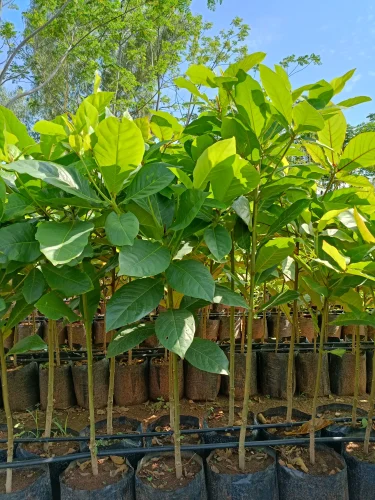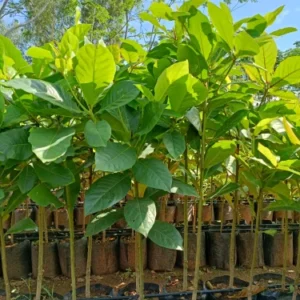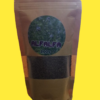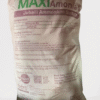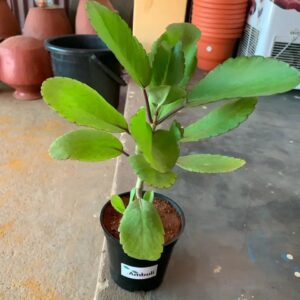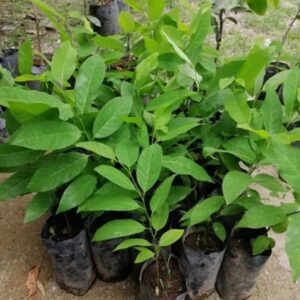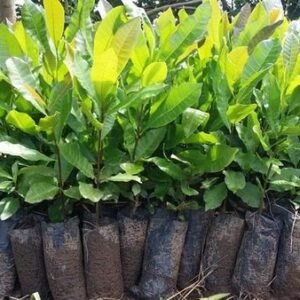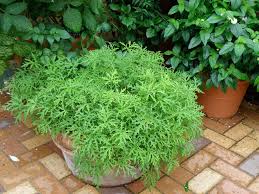🌳 Almond Seedling Growing Guide
Almond seedlings come from the almond tree (Prunus dulcis), a nut-bearing deciduous tree that produces healthy, tasty nuts. While almonds are often grown in temperate climates, they can also thrive in certain warm regions like parts of Ghana, provided proper care is given.
✅ Key Features of Almond Seedlings
| Feature | Description |
|---|---|
| 🌿 Type | Deciduous tree (drops leaves in dry/cold season) |
| 📏 Height at Maturity | 4 to 10 meters |
| ⏳ Fruit Bearing Time | 3–5 years (grafted) or 5–7 years (seed-grown) |
| 🌞 Climate | Prefers dry, warm climates with mild winters |
| 💧 Water Needs | Moderate (needs good drainage) |
| 🌼 Pollination | Some types are self-pollinating, others need a second tree |
📖 How to Grow Almond Seedlings
1. Planting Site
-
Choose a sunny spot (6–8 hours of sun per day)
-
Soil should be well-drained, loamy or sandy
-
Avoid areas with waterlogging
2. Spacing
-
For orchard planting: 5–6 meters between trees
-
For backyard: allow room for full canopy growth
3. Planting Time
-
Best done at the beginning of the rainy season or during cool weather if irrigated
4. Watering
-
Water regularly during the first 1–2 years
-
Mature trees are drought-tolerant but produce better with regular watering
5. Fertilizing
-
Use compost or organic manure during planting
-
Apply NPK 15-15-15 or fruit tree fertilizer every 3–4 months
6. Pruning
-
Begin shaping the tree early for better branching
-
Remove any dead, diseased, or crossing branches
🌰 Fruit/Nut Production
-
The almond “fruit” is a drupe – a fleshy outer layer with a hard shell inside (the edible nut is inside that shell).
-
Fruits mature in late dry season or early rainy season depending on region.
🐜 Common Pests/Diseases
-
Aphids, borers, and mites
-
Fungal issues like leaf spot or root rot (especially in poor-drainage soils)
-
Use neem oil or recommended fungicides/insecticides as needed

